6 Most Beautiful Mosques in Egypt
5 min readCairo is known as “the city of a thousand minarets” – and it’s packed with thousands of historic mosques that are masterpieces of Islamic architecture.
Islamic Cairo (including Moez Street) has one of the highest concentrations of architectural treasures in the Muslim world.
And cities like Alexandria and Luxor have their fair share of breathtaking mosques.
So where do you begin to explore this incredible history?
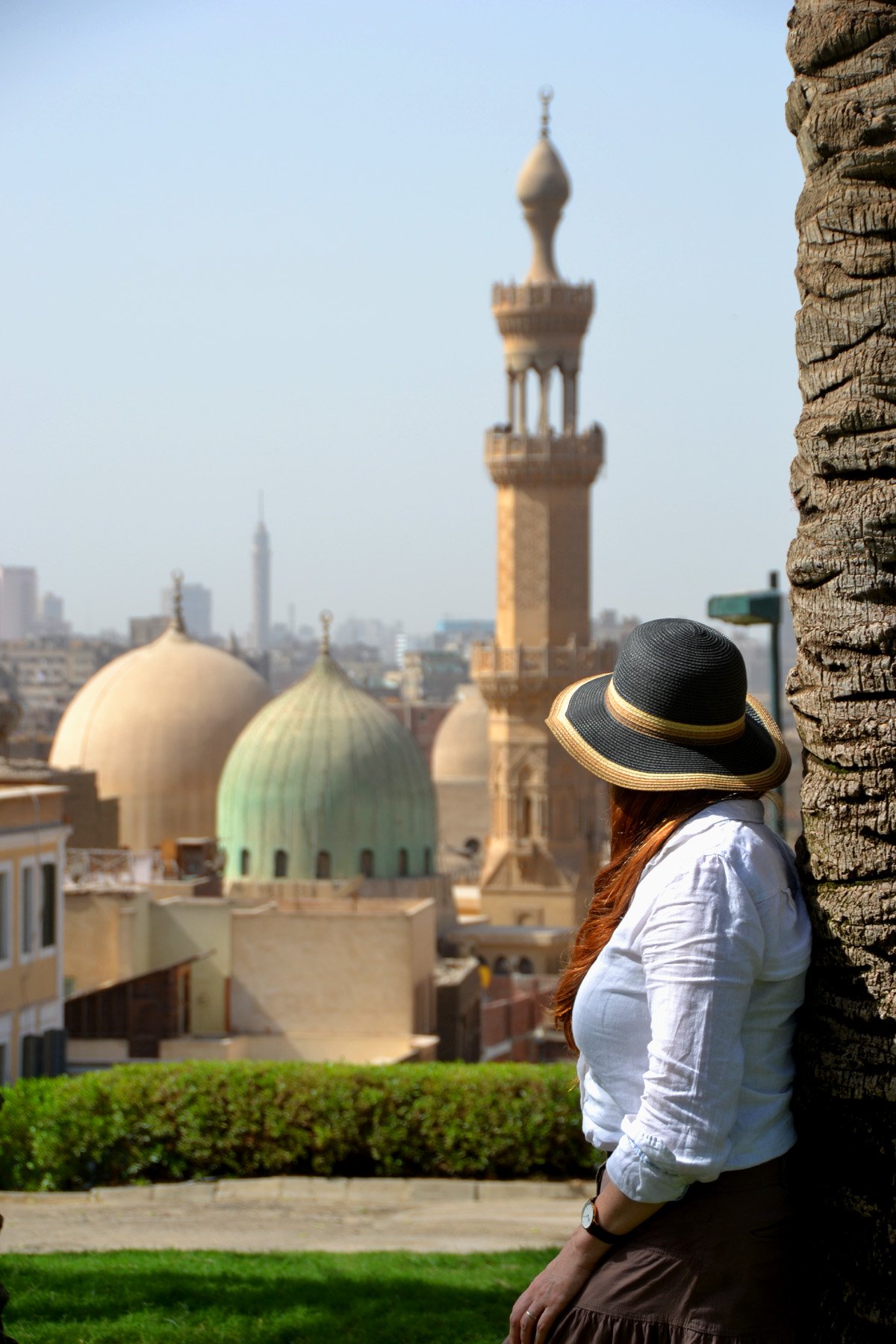
I’m a travel writer living for over a decade in Egypt and I’ve visited dozens of different mosques across the country.
And this is my ultimate list of the most beautiful and historically significant mosques you must see in Egypt – including a few hidden gems!
1. Mosque of Muhammad Ali (Cairo)
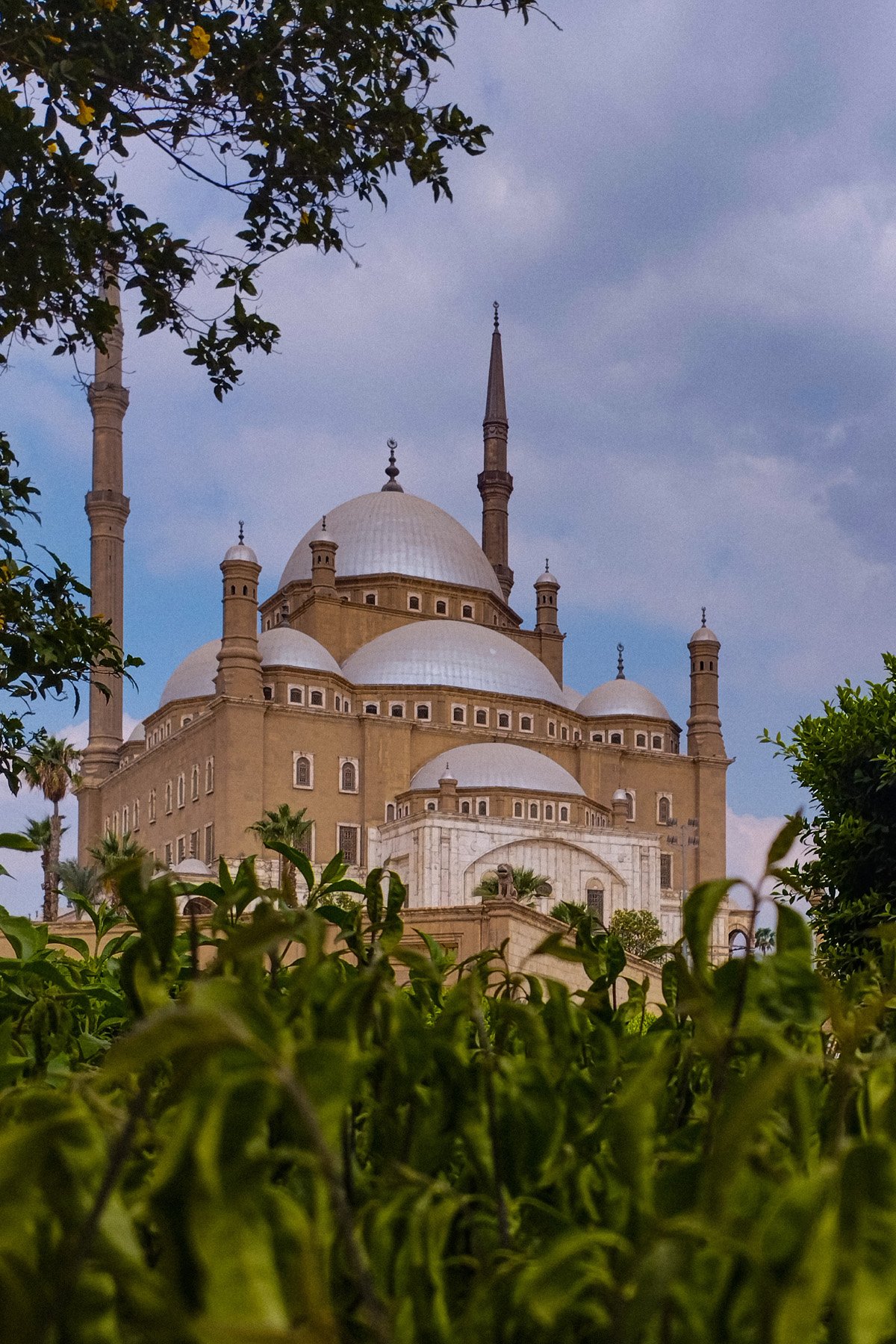
The grand 19th-century Mosque of Muhammad Ali is the iconic centerpiece of the Cairo Citadel. It stands on a hill overlooking the city surrounded by a medieval stone fortress built by Saladin.
This Ottoman masterpiece is definitely one of Cairo’s glitziest mosques with its lavish domed ceiling, low-hanging lanterns and intricate carvings. It’s also known as the Alabaster Mosque and has a gleaming open-air courtyard with a beautiful ablution fountain.
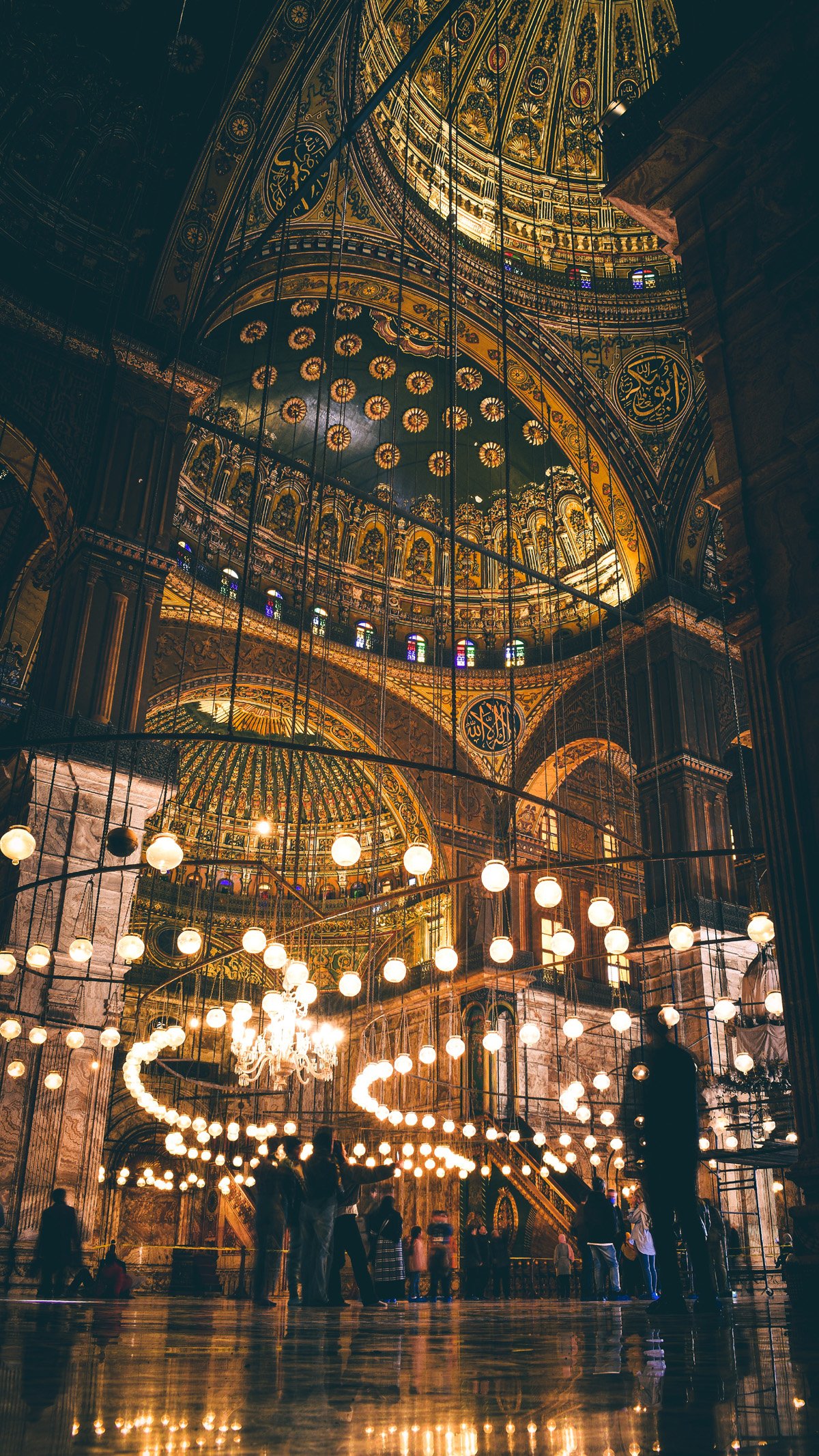
Head to the terrace for some sweeping views of Cairo’s old minarets and towering modern-day buildings – you can even spot the pyramids on a clear day.
How to visit: The mosque is inside the Cairo Citadel, which is perched up on a hill along a busy highway. It’s largely a tourist attraction and not really a part of local everyday life. Take an Uber and they’ll drop you off at the gates. Then it’s a short uphill walk to the ticket booth.
READ MORE: Cairo Citadel: An Ultimate Local’s Guide
2. Abu Al Abbas Al Mursi Mosque (Alexandria)
Abu Al Abbas Al Mursi is the oldest and most historic mosque in Alexandria built over the tomb of a 13th-century Sufi saint.
Abu Al Abbas Al Mursi was an Andalusian sheikh who spent much of his life in Alexandria. His tomb later became a popular pilgrimage spot for Muslims heading to Mecca. A mosque was built over the shrine in 1307 and the complex was expanded over the centuries. It was finally completed in the 1940s with renovations by a pair of Italian architects.
The interior contains gorgeous painted ceilings, columns and intricate carvings with Quranic verses. The shrine to the Sufi mystic still attracts devotees.
How to visit: This mosque stands in a large square just off the corniche, not far from the Qaitbay Citadel. It’s an easy sightseeing stop on your way to the citadel.
3. Al Azhar Mosque (Cairo)
Al Azhar is a regal 10th-century mosque that’s at the heart of Islamic Cairo – and it’s the highest authority in the world for Sunni theology.
Founded in 970 AD, Al Azhar Mosque was the first Fatimid monument in the newly-established capital of Islamic Cairo.
It’s also home to Al Azhar University – the prestigious center of Sunni theology that draws in students from around the world.
The sweeping courtyard is sparkling with white marble. And it’s surrounded by three minarets – including a double finial that was added on by the Mamluk Sultan Al Ghouri.
How to visit: Al Azhar is just across the street from Cairo’s famous Khan el Khalili souq and a few minutes from Moez Street. It’s an easy stop as you’re visiting Moez and definitely worth it. But keep in mind Al Azhar is a scholarly mosque so there’s no wiggle room in the dress code for tourists. Long skirts and headscarves are provided at the door.
READ MORE: Al Azhar Mosque: An Ultimate Visitor’s Guide (By A Local)
4. Abu Haggag Mosque (Luxor)
Abu Haggag is one of the world’s most unique mosques – it’s built right inside the Luxor Temple nestled in the walls of the ancient court of Ramses II.
The 13th-century mosque contains the tomb of Sheikh Abu Haggag. And it has two mud brick minarets that give a surreal compliment to the nearby Ancient Egyptian columns.
The Abu Haggag Mosque also makes Luxor Temple the oldest continusously used temples in the world. After the fall of Ancient Egypt, this corner of Luxor Temple was used by Coptic Christians before it was converted into a mosque.
The interior is absolutely surreal. There are prayer mats spread out beneath short columns etched with hieroglyphs.
How to visit: You’ll spot the walls and minarets of Abu Haggag Mosque from inside Luxor Temple. To go inside, you’ll have to exit the temple and enter through the mosque doors.
5. Sultan Hassan Mosque (Cairo)
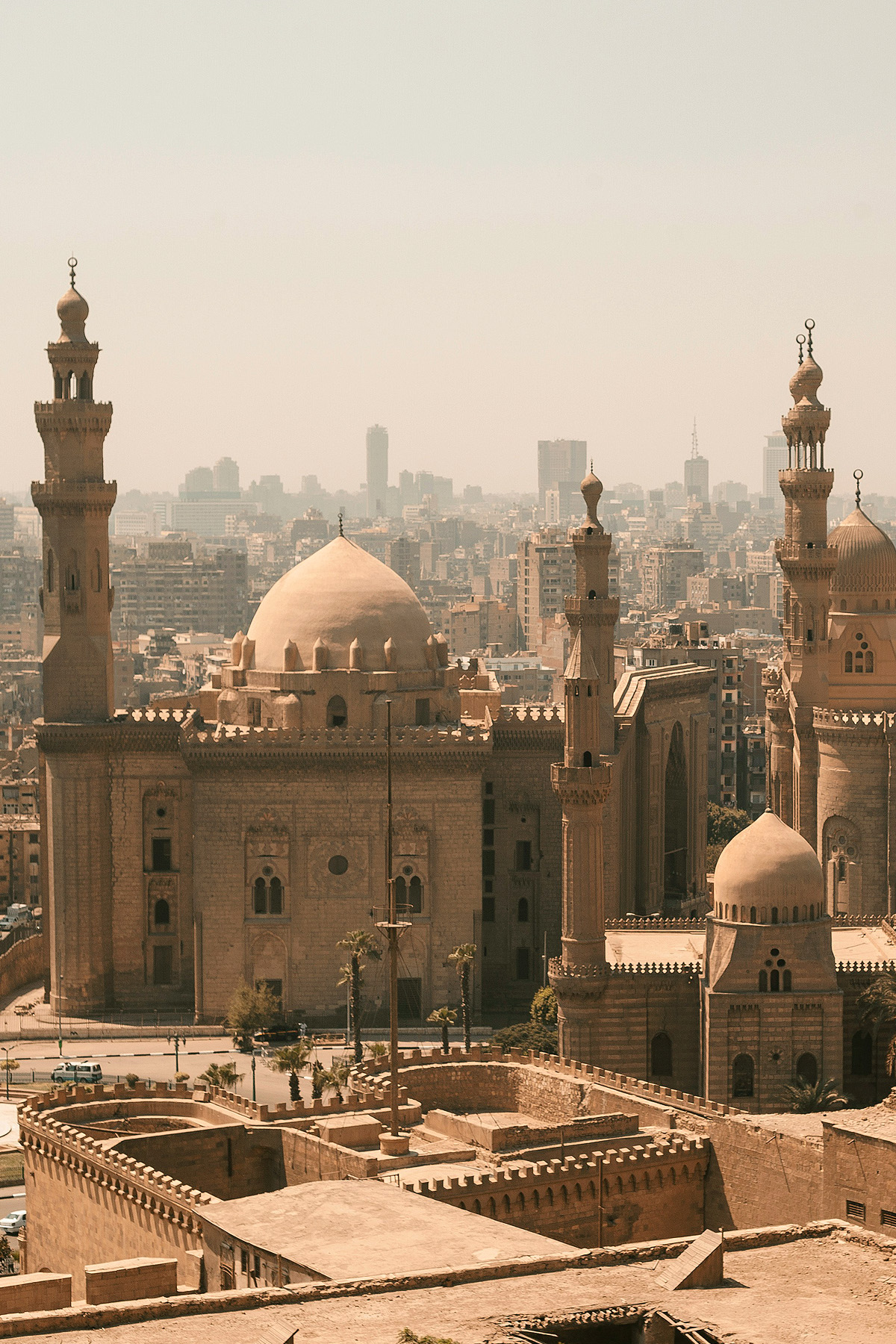
This grandiose 14th-century mosque is a stunning example of Mamluk architecture – and contains one of the most beautiful mihrabs (prayer niches) in Egypt.
Built from enormous blocks of stone (during the Black Plague, no less), its walls reach 38 metres and symbolized the might of Mamluk rule.
The splendid courtyard has a domed ablutions fountain and soaring vaulted halls on all four sides. These four corners of the courtyard lead into four madrasas, where the four Sunni Islamic schools were taught.
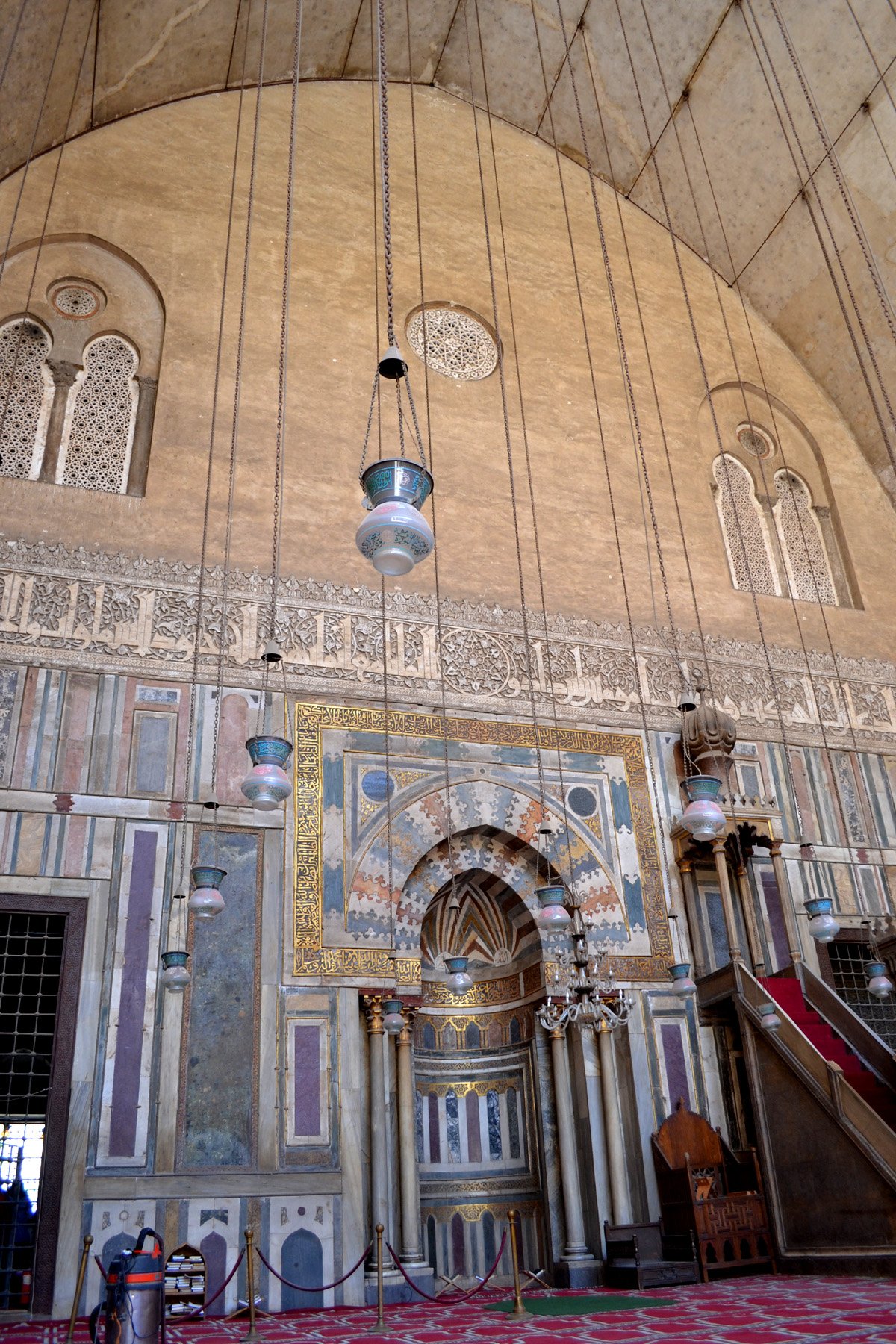
A bronze door leads to the sultan’s mausoleum – though it stands empty. Sultan Hassan was assassinated before the mausoleum was finished and his body was never found.
How to visit: Sultan Hassan is near the Cairo Citadel and an easy taxi ride away. You’ll get dropped off at a large square and the ticket booth is right at the front. Your ticket to Sultan Hassan also gets you into Al Rifa’i Mosque, just next door.
READ MORE: Sultan Hassan Mosque: An Ultimate Local’s Guide
6. Al Rifa’i Mosque (Cairo)
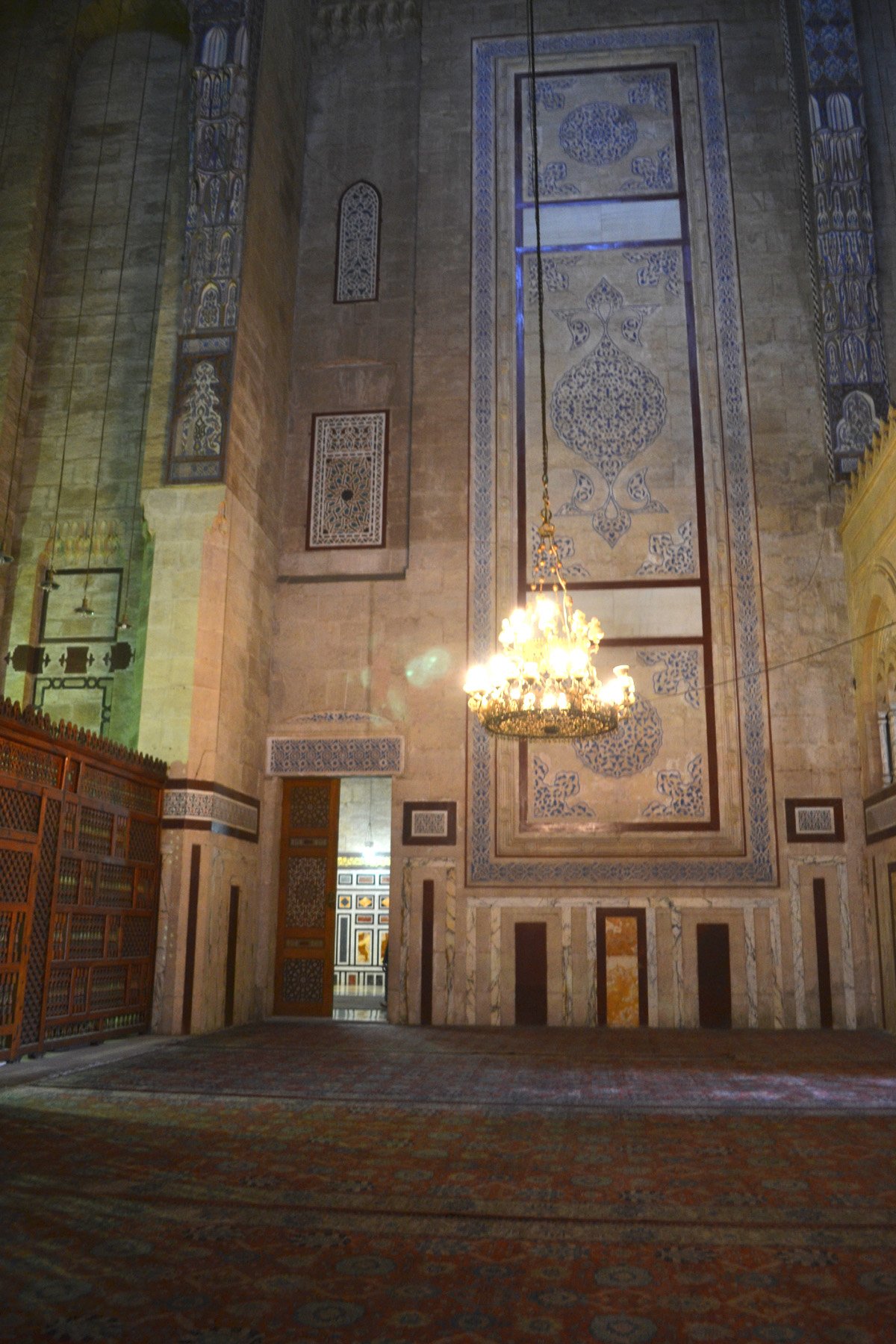
Al-Rifai was built right alongside Sultan Hassan in an attempt by 19th-century rulers to link themselves to the Islamic glories of the past.
It was completed in 1912 and houses the royal mausoleum of Muhammad Ali’s family. It’s also the final resting place of the last Shah of Iran, who was overthrown by the Iranian Revolution and exiled in Egypt.
The doormen show you around and unlock the various mausoleums – they sometimes do Quran recitations under the domed ceilings to showcase the incredible acoustics.
Al Rifa’i is truly majestic with soaring ceilings filled with intricately carved windows and stained glass.
How to visit: Al Rifa’i is next to Sultan Hassan. Get dropped off at a large square and walk to the booth to get your ticket to both mosques.
READ MORE: Sultan Hassan Mosque: An Ultimate Local’s Guide



